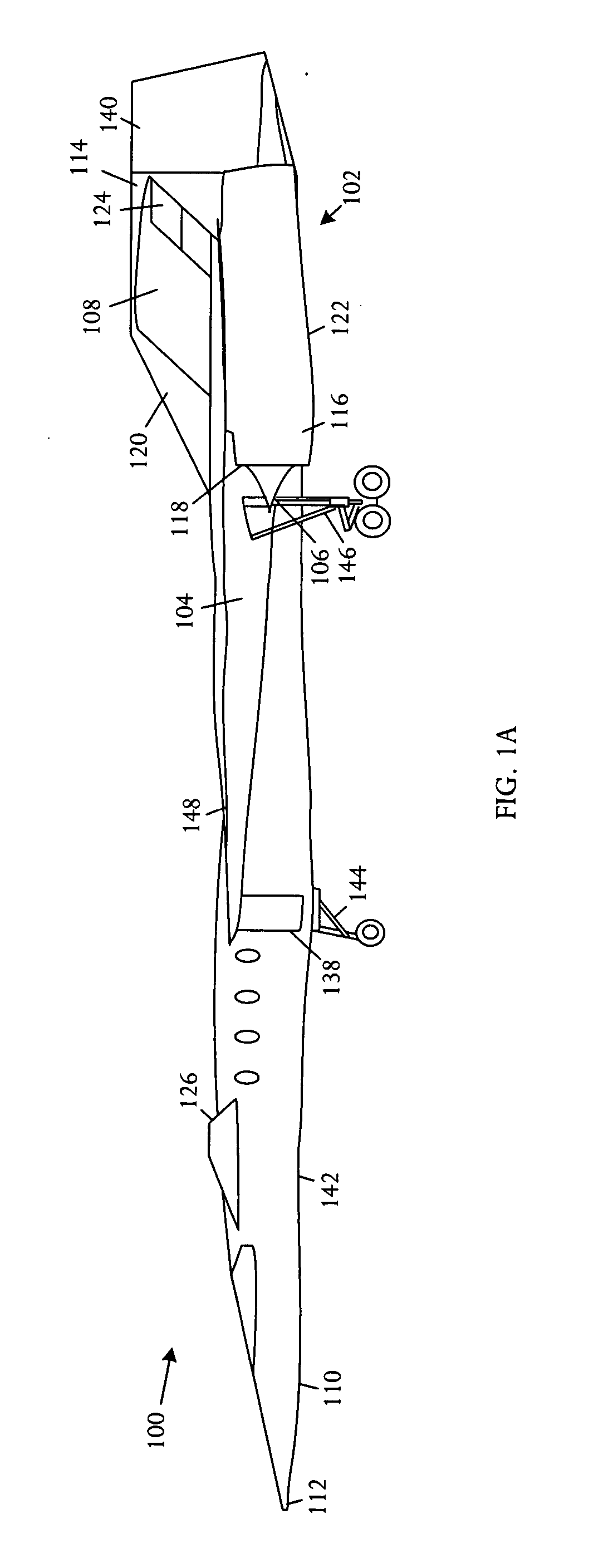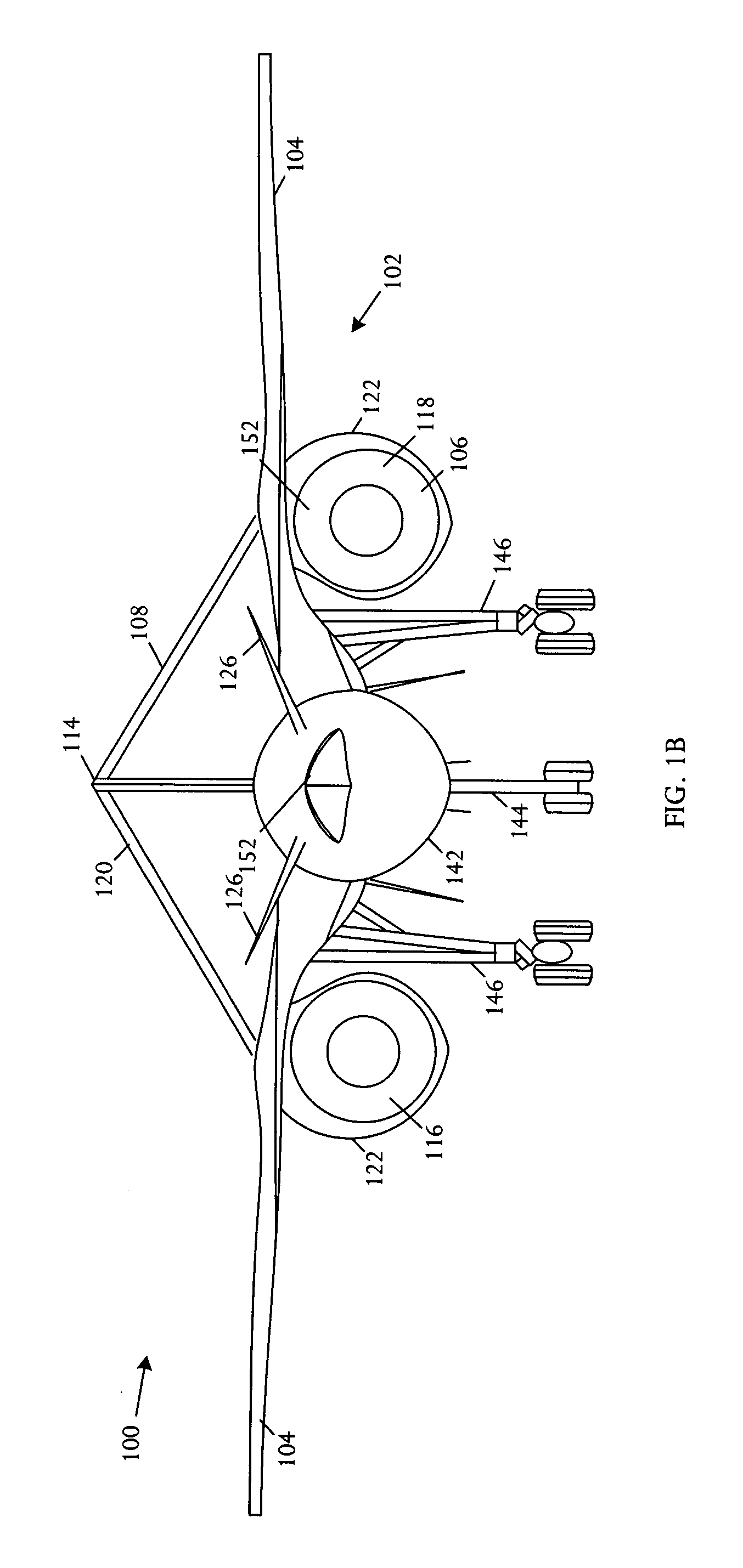Wing gull integration nacelle clearance, compact landing gear stowage, and sonic boom reduction
a technology of integration nacelle and compact landing gear, which is applied in the direction of canard-type aircraft, aircraft navigation control, transportation and packaging, etc., can solve the problems of negative response and regulatory limitations on supersonic travel, difficult to design an aircraft with an n-wave signature of sufficiently low amplitude, and difficult to achieve the effect of facilitating the appropriate tail clearan
- Summary
- Abstract
- Description
- Claims
- Application Information
AI Technical Summary
Benefits of technology
Problems solved by technology
Method used
Image
Examples
Embodiment Construction
[0020] Referring to FIGS. 1A, 1B, and 1C, schematic pictorial diagrams respectively showing side, front, and top views of a supersonic cruise configuration aircraft 100 comprising a fuselage 142 extending on a longitudinal axis from a forward nose 110 to an aft tail 114. A wing 104 is coupled at an inboard section to the fuselage 142 and extends to an outboard tip, and has a leading edge and a trailing edge. The aircraft 100 further comprises a landing gear 146 that is coupled to the wing 104 and can of stowing into the wing 104 and fuselage 142 on retraction. The landing gear 146 has a landing gear strut. The wing 104 is gulled with a dihedral at an angle that is increased inboard and aligns with the retracted landing gear 146. The wing 104 has a minimum thickness sufficient to enclose the landing gear 146.
[0021] In some embodiments, the aircraft 100 further comprises a leading edge flap 134, for example a Krueger flap, which is coupled to the leading edge of the wing 104. The lea...
PUM
 Login to View More
Login to View More Abstract
Description
Claims
Application Information
 Login to View More
Login to View More - R&D
- Intellectual Property
- Life Sciences
- Materials
- Tech Scout
- Unparalleled Data Quality
- Higher Quality Content
- 60% Fewer Hallucinations
Browse by: Latest US Patents, China's latest patents, Technical Efficacy Thesaurus, Application Domain, Technology Topic, Popular Technical Reports.
© 2025 PatSnap. All rights reserved.Legal|Privacy policy|Modern Slavery Act Transparency Statement|Sitemap|About US| Contact US: help@patsnap.com



